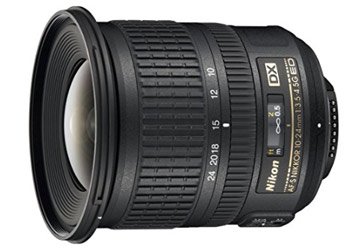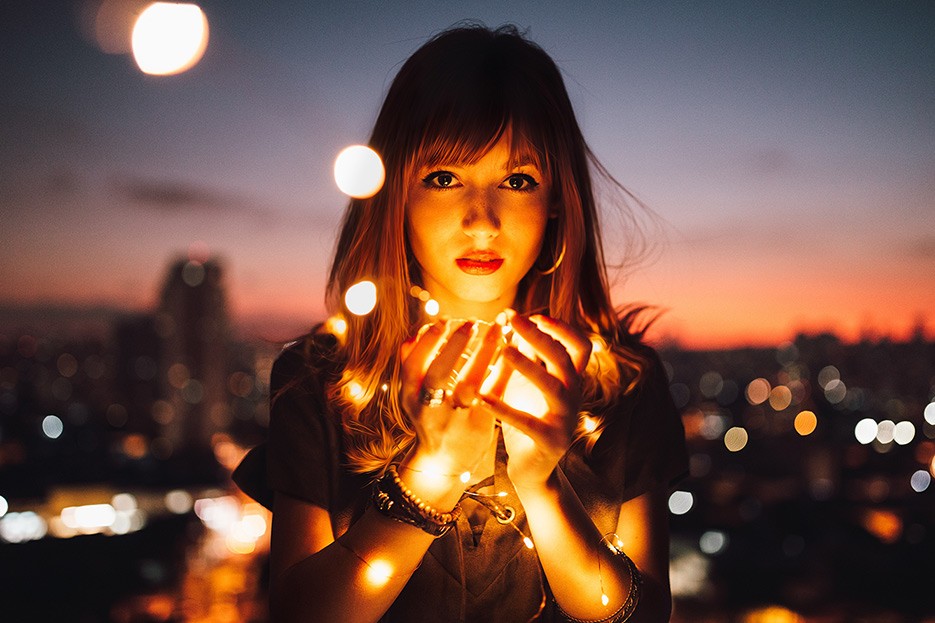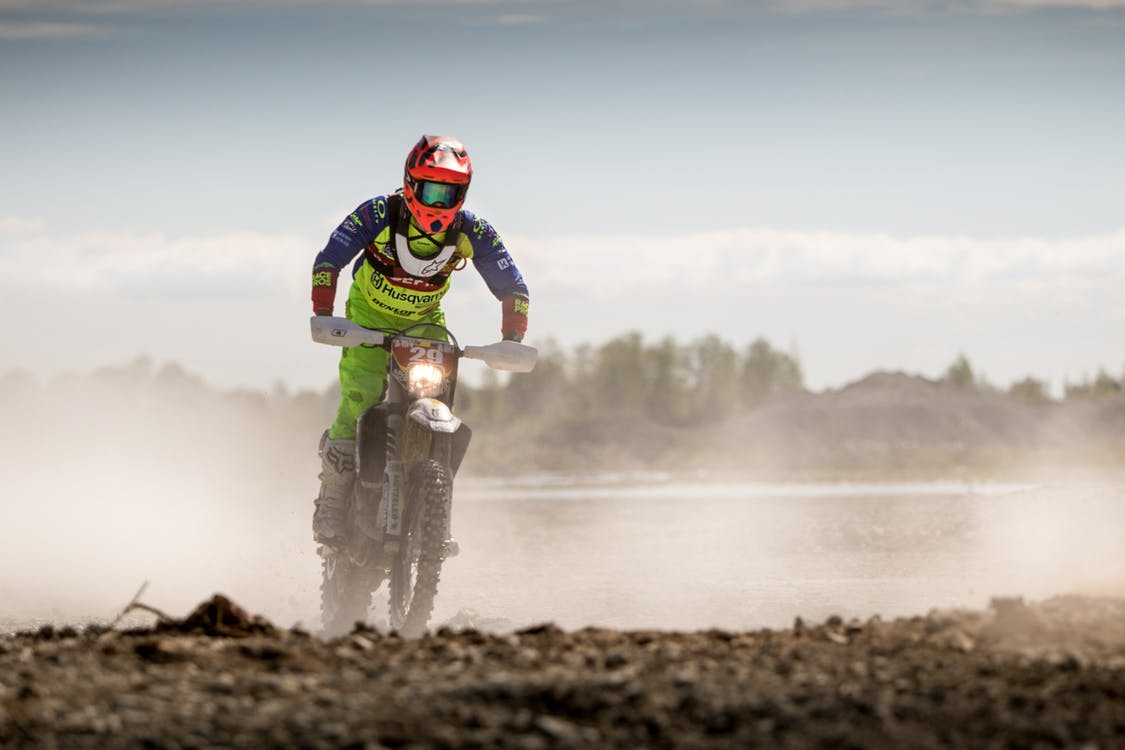Landscape photography is one of the most popular types among both amateur and professional photographers. We’ve researched the best Nikon lenses for landscape photography to help save you time and make it easy to select the best wide-angle lens for your Nikon.
Best Nikon Landscape Lenses for Zoom:
Best Nikon Landscape Prime Lenses:
Best Nikon Landscape Lenses for DX Only:
The last 3 lenses were specifically designed for Nikon DX cameras which have a smaller sensor (D3400 up to D500). You can mount them on Nikon FX cameras but you’re not using the camera or lens to its full potential. All other lenses fit on both FX and DX models.
Selecting the Best Nikon Wide Angle Lens for Landscape Photography
Traveling, exploring, waiting for the beautiful light and simply enjoying the time in nature can be amazing.
While your DSLR camera is an important tool in capturing landscape shots, the lenses you use play a far bigger role. For landscape photography the most important factor is the focal length you choose. Although you could, technically speaking, photograph with just about any lens, going with a Nikon lens with an extremely wide angle will allow you to capture so much more. As well as show your viewers more of the situation or scene.
So what is the ideal size lens for landscapes? That really depends on what you prefer to shoot. Our lists below are arranged from widest (capture as much of the scene as possible) to longest (isolate wildlife or a specific subject).
Landscape shooters usually own a FX DSLR (meaning a Full Frame Nikon Camera) because of no crop factor. If you have a Mirrorless Nikon Camera you’ll see that same ‘FX’ used to denote a full frame sensor. However, there are plenty of excellent options for those of you who own a Nikon with a DX sensor.
Finding a lens for landscape photography can be tricky since there are a ton of camera lenses available. Based on quality we checked the best landscape lenses from Nikon, Sigma and Tamron, and created this list of our very best picks.
Best Nikon Landscape Lenses for Zoom 2022
Widest to Longest (Full Frame + DX)
If you decide to buy anything after clicking on our Amazon links, you automatically support us. It’s what allows us to write guides such as this one.
1. Nikon 10-24mm f/3.5-4.5G ED (DX Only)
The Nikon 10-24mm f/3.5-4.5G ED is more or less your default option if you have a DX camera and want the widest zoom available.
It’s not the cheapest, but it’s worth the money if you like the range and don’t care too much about low light shooting. For landscape and most outdoor photography, f/3.5 to f/4.5 is plenty of light, especially if you’re using one of newer Nikon cameras that can handle high ISO pretty good.
Mounted on a Nikon DX camera, its field of view is equivalent to a 15-36mm, which is the most common wideangle length on FX cameras.
Image quality and colors are very good, but you might notice some distortion and softness when shooting wide open at ~10mm. This is expected and is common with all extreme wide angle lenses, and the Nikon actually performs really well for the price.
It’s got 2 Extra Low Dispersion elements that reduce chromatic aberration and other lens issues, 3 Aspherical elements to reduce the coma, and SWM for quick and silent auto focusing.
If you don’t care about low light, and want the most zoom for your DX camera, no other lens beats the 10-24mm..
You can buy it at Amazon or see more reviews here.
2. Nikon 11-16mm f/2.8 Pro DX II (DX Only)
For low light, indoor and astrophotography, the Tokina 11-16mm f/2.8 is a great choice.
It’s actually really good lens for landscape and outdoor use, but it depends on if you’re okay with 11 to 16mm range. It’s not a lot, so you’re always going to be “stuck” with extreme wide angles.
It costs a lot less than most other lenses on this list, has a great build quality and allows you to shoot at f/2.8. As you will see with other lenses, f/2.8 makes a zoom a lot more expensive, which is why Tokina is so popular among Nikon photographers.
Compared to the 10-24mm above, the Tokina feels better built and also looks sharper when you reach the same aperture sizes. On the other hand, it displays more flare and chromatic aberration, so you’ll have to correct those in post, especially if you shoot RAW.
In short, get the Tokina if you want to spend less, shoot with f/2.8 (also for low light) and don’t care about having a lot of zoom.
You can buy it at Amazon or see more reviews here.
3. Tamron 15-30mm f/2.8 Di VC USD
Wide zooms from third-party lenses that would challenge more expensive Nikon zooms are hard to find, but the Tamron 15-30mm f/2.8 Di VC USD does just that.
It was made to rival Nikon’s famous 14-24mm f/2.8G and Canon’s 16-35mm f/2.8 series. None of these have any stabilization added though, and that is perhaps Tamron’s strongest selling point right now. That, and the low price combined with excellent image quality! Check out Dpreview’s comparison between 14-24mm and Tamron 15-30mm here.
We had a tough time deciding whether we should put both the Nikon 14-24mm and Tamron on this list, but seeing how close (and even better somewhere) the Tamron is, we had to go with it. It’s cheaper, has more zoom on the far end (although you lose 1mm, which to some may be important) and offers Vibration Reduction which is really useful especially if you record hand held videos.
The Vibration Reduction (VC) mechanism helps up to 3 stops (you can see it in TDP’s review here), which means you can shoot with 1/8 where you’d normally have to choose 1/60.
Thanks to USD (Ultrasonic Silent Drive) it focuses quietly and accurately. Third-party lenses are never as good as Nikon lenses, so you can expect hunting every now and then in low light, but it’s very fast and usable for action as well!
You can buy it at Amazon or see more reviews here.
4. Nikon 16-35mm f/4G ED VR
The Nikon 16-35mm f/4G ED VR is another excellent lens, although it costs only around $100 less than the Tamron.
What are the pros and cons compared to the 15-30mm?
- You can use normal filters on the 16-35mm f/4
- The 16-35mm is a lot smaller and lighter (almost twice as less)
- 5mm more on the telephoto end.
A lot of people find the dimensions to be very important, so if for your traveling needs you want to be as light as possible, the 16-35mm wins big here.
On the other hand, the Tamron lens for Nikon being just a little bit more expensive, it gets you an f/2.8 aperture, slightly better image quality in corners and 1mm extra which is very useful when shooting in tight indoor spaces.
Both lenses have Vibration Reduction, so it’ll ultimately come down to whether you find the 3 advantages of the 16-35mm f/4 to be crucial for your needs.
You can buy it at Amazon or see more reviews here.
5. Sigma 18-35mm f/1.8 DC HSM Art (DX Only)
The Sigma 18-35mm f/1.8 DC HSM is an impressive piece of glass; f/1.8 in a zoom is something we’ve never seen before.
All of this would be useless if the optical performance was crap, but its the exact opposite. It belongs to Sigma’s Art series and has excellent image quality, sharpness, colors and overall performance. Since it’s only for DX mount, its field of view is equivalent to a 27-52mm. Not extremely wide, but it still starts where the 18-55mm kit lens begins and it’s acceptable for DX cameras.
The lens is razor sharp and offers fast auto focus thanks to the Hyper Sonic Motor, but because of f/1.8 it’s relatively big and heavy. You can see the specifications here; at 28.6 oz (811g) and 3.1″ x 4.8″ (78mm x 121mm) it’s not compact.
It does feel very solid though and professional like, but it’s not weather-sealed. It takes 72mm filters and has a minimum focusing distance of 11″/28cm. If you often shoot in the 18-35mm range and would like something appropriate for low light as well, the Sigma wins here.
It serves as a both landscape and casual lens (portraits, pets, parties) thanks to the f/1.8 and 50mm length on DX.
You can buy it at Amazon or see more reviews here.
6. Nikon 24-70mm f/2.8G ED AF-S
We only recommend the the Nikon 24-70mm f/2.8G ED for FX cameras. Why? Because it’ll be too long on DX cameras to be used as a wideangle lens.
It’s expensive, yet worth every dollar. The 24-70mm range is useful for almost all types of photography, from landscape, indoors, weddings, cities, traveling etc. The 24-70mm lens is extremely popular with every brand, and the Nikon is no exception.
There’s a cheaper Tamron 24-70 f/2.8 with Vibration Reduction and similar image quality. However, what ultimately led us to go with Nikon was more solid build quality and construction, and a faster, more reliable AF system even in low light. If you don’t need the latter to be sports-like, then you’ll appreciate the cheaper Tamron. You can check out the comparison at Camera Labs, where both corner and center performance look similar for both lenses. As of 2015, Nikon also sells their own 24-70mm f/2.8 VR but it’s at around $2,200.
The 24-70mm is also a bit heavier than the 24-120mm below, but it balances nicely with bigger FX models (such as the D810).
You can buy it at Amazon or see more reviews here.
7. Nikon 24-120mm f/4G ED VR
We find the Nikon 24-120mm f/4G ED VR to be the best bang for the buck. It does offer a lot of zoom but nothing unrealistic, the aperture stays at f/4 throughout the whole zoom and Vibration Reduction is a big plus when working with longer lengths.
Again, due to its starting point 24mm, we recommend it to FX users. A lot of people also imagine wide angles when speaking about a lens for landscape photography, but quite often you’ll also find something interesting further away, and that’s where the 120mm length hops in. Sometimes you want to capture animals you encounter, get closer to flowers or just capture mountains far away.
There’s also the new Sigma 24-105mm f/4 that we wanted to go with first, but the extra 15mm on the far end is what convinced us to choose Nikon. They are both optically great and can be used as your only lens, but the Sigma is $200 cheaper (same minimum focus distance and weight).
You can buy it at Amazon or see more reviews here.
8. Tamron SP 70-200mm f/2.8 Di VC USD G2
The Tamron 70-200mm f/2.8 Di VC USD G2 was released a few months ago and is our favorite 70-200mm lens out there. If you already have something that covers a wide angle but are looking for a high quality telephoto to capture more than just nearby scenery, a lens that goes to 200mm is recommended.
Here’s why. It’s cheaper than the rest, delivers nearly identical image quality and sharpness, has great Vibration Reduction with 5 stops of help and great auto focus. On top of that, you get 6 years US warranty! Talk about customer support.
Compared to Nikon’s most expensive 70-200mm f/2.8 FL, you could get two Tamron’s for that price. The image quality is nearly indistinguishable between the two, however the Nikon is slightly more accurate when it comes to auto focus. The Tamron is good, don’t get us wrong, and it’s precise and quiet, but there’s only a few people that would be willing to spend twice as much to get even better AF than what you get with this lens.
For landscape, having the absolute fastest AF is not such a priority, which is why it’s better to save the money.
The lens is perfect even for high megapixel DSLR cameras such as the D810 with its 36MP sensor. The VC works wonderfully up to 5 stops so you can expect sharp results with 1/15 where you’d need ~1/500 normally. The lens has weather sealing so if you’re shooting outdoors in difficult weather, or happen to be near water, you’ve got much less to worry about.
You can buy it at Amazon or see more reviews here.
Best Nikon Landscape Prime Lenses 2022
Widest to Longest (Full Frame + DX)
1. Rokinon 14mm f/2.8 IF ED UMC
Don’t care about auto focus and just want something cheap but with great image quality? Take a look at the Rokinon 14mm f/2.8 IF ED UMC prime lens.
A lot of landscape photographers use manual focus only, and if you fall in that category then there’s really no reason to get expensive lenses (unless you’ll use them for other types too). The Rokinon 14mm has an AE chip so it provides exposure and other information to the camera, but that’s about it.
Plus, wide angle lenses have such a big depth of field that even if you slightly miss the focus, you won’t notice it in most cases. If you’ve never focused manually before, it really only takes a couple of uses before you’ll really get used to it and won’t need a lot of time to get tack sharp shots. The focus ring is smooth and the lens feels very well built.
Anything bad? Yes, the distortion at 14mm is visible so you’ll have to correct it later if straight lines are a requirement. The front element is also so big you won’t be able to use regular filters, but seeing as the lens costs around $400 and is sharp at f/2.8, this is a steal.
You can buy it at Amazon or see more reviews here.
2. Nikon 20mm f/1.8G ED
The Nikon 20mm f/1.8G ED is a great, lightweight wide prime that delivers sharp results.
It’s relatively inexpensive Nikon Prime lens and because of its f/1.8 aperture, you can also use it for low light/astrophotography. If you dislike zooms or just want something compact to carry with you, the lens weighs only 12.5oz (354g) and takes 77mm filters.
If you use a DX camera, it might be too long for you so try to shoot with another lens that goes to 20mm and see if you like it. For FX lenses, this is a perfect length, but on a Nikon DX camera it’ll be equivalent to a 30mm prime lens.
You can buy it at Amazon or see more reviews here.
3. Sigma 24mm f/1.4 DG HSM Art
It was a tough battle between the Nikon 24mm f/1.4 and Sigma 24mm f/1.4 DG HSM Art, but with no difference in image quality we had to go with the Sigma here.
The lens feels really good in hands and isn’t super heavy or big. In fact, it’s very similar to the Nikon version.
The f/1.4 aperture combined with Hyper Sonic Motor makes the 24mm Art great for both moving subjects in outdoor and indoor places, as well as a great Prime lens for astrophotography or landscape photography when there isn’t a lot of light available.
If you’re specifically looking for a 24mm Prime lens for landscapes, the Sigma 24mm provides the best quality, features and price. It’s half the price of the Nikon and is actually better not worse!
You can buy it at Amazon or see more reviews here.
4. Nikon PC-E 24mm f/3.5D ED
The Nikon PC-E 24mm f/3.5D ED does not have auto focus so it’s best to use it on a tripod, like all other tilt-shift lenses.
What is the beauty of perspective control/tilt-shift lenses?
First is the ability to achieve absolutely straight lines by tilting or shifting the lens, something that’s a must for professional architecture, indoors and building photography. You could also do this with certain subjects in the nature, like the sea or trees.
The second reason why these lenses are great is the fact that you can stack shots together. In addition you can get extremely sharp, high detailed photographs with a very small depth of field. The lens allows you to change your focus and you can easily take 2-3 photos at the same location. Then you simply change the focus (one for the foreground, one for the background, more if needed) and merge these together later. If you’re interested in learning to shoot landscape photography with tilt-shift lenses, check out this post with beautiful examples.
This focus ability also makes them good for product photography and achieving the miniature effect, but they are quite expensive so we only recommend getting a tilt-shift if you can see and use the benefits.
The 24mm specifically, is an extremely sharp prime lens for landscapes and thankfully not as expensive as Nikon’s new 90mm PC-E. Check out this video by LensProToGo for focusing and tilt-shift uses.
You can buy it at Amazon or see more reviews here.
Our Recommended Landscape Lenses for Nikon
Consider this a shorter, more direct version of this entire guide. Simply what we think gives you the absolute most for your money and what we’d go with personally.
Even though all lenses above are awesome, sometimes less options makes it easier to decide.

Best Lenses For Nikon Full Frame:
- Tamron 15-30mm f/2.8 DI VC USD– The lens is razor sharp, features VR, great macro mode and it’s the lightest to carry.
- Nikon 24-120mm f/4G ED VR – Plenty of reach but still high-quality optics and a great all-around travel lens
- Rokinon 14mm f/2.8 IF ED UMC – Super cheap, no auto focus, sharp and great for still photography
- Sigma 24mm f/1.4 Art – Brilliant for astrophotography as well as everything else

Best Lenses For Nikon DX:
- Nikon 10-24mm f/3.5-4.5G ED – The best Nikon wide angle DX lens, lots of reach, relatively affordable
- Sigma 18-35mm f/1.8 DC HSM Art – Costs a lot more, but still optically amazing and gives you the ability to shoot in low light
- Rokinon 14mm f/2.8 IF ED UMC – Super cheap, no auto focus, sharp and great for still photography
For great landscape photography tips, check out this 500px article and 20 Tips from OutdoorPhotographer.
While the right lens is the most important thing to complement your camera, remember that the speed of your memory card is also extremely important. There are a lot of memory card brands out there so it can be a bit overwhelming to figure out which on is compatible with your camera.
If you need some help finding the right one check out our selection of the best photography accessories.
How To Choose a Lens for Landscape?
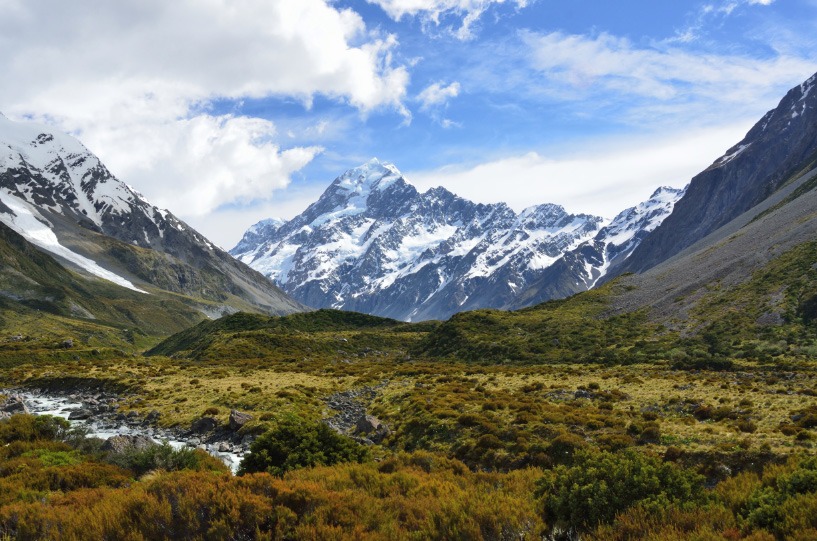
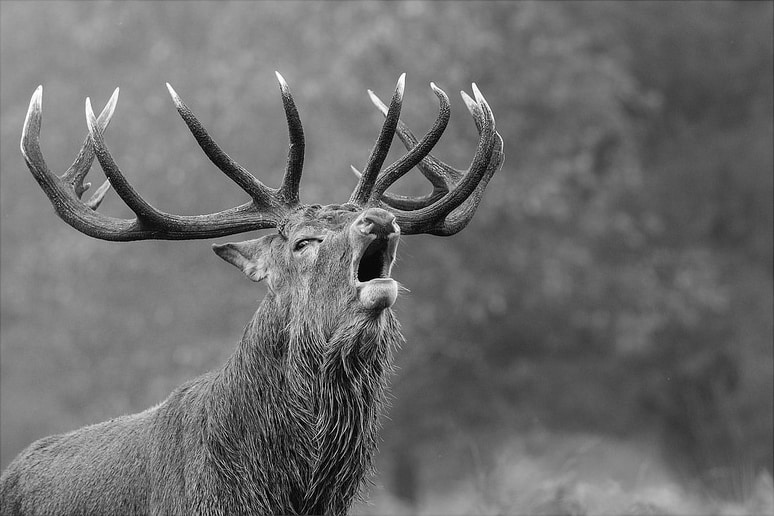
Focal Length – Wide Angle Lens
Trying to figure out which is the best wide angle lens for your Nikon? The best Nikon landscape lens is either extremely wide or completely the opposite, in the telephoto lens range.
Wide angle lenses are the most common lengths used for landscape photography. This is because they allow you to capture pretty much everything you see. In other words they have a wider angle of view for the scene you’re shooting. Anything under 20mm is considered extreme wide angle, while 20-35mm is wide. So for a Nikon wide angle lens you need to be at least below 35mm.
Telephoto lenses are excellent for isolating a specific subject or for shooting animals you will encounter on trips. So our recommendation definitely depends on your style of photography. We only recommend getting a Nikon telephoto lens if you’ve already spend a lot of time using a wide one. When selecting a landscape photography lens specifically, a wide angle lens will be more versatile.
Select a ‘Super’ Telephoto Lens for Wildlife Photography
So what is the best focal length for wildlife photography? We’d recommend the minimum Telephoto lens as 300mm. Although, a 500mm Telephoto lens will give you more flexibility with whatever wildlife or birds you come across. This post is geared towards landscapes specifically so you’ll notice we don’t have any Nikon camera lenses listed at those ranges. If you’re interested in Bird and Wildlife photography then check out our post for the best Nikon telephoto lenses suited for that.
As a quick point of clarification, Telephoto does not always mean Zoom. However, many people will use the terms in conjunction. In a technical sense, a Zoom lens simply means a lens where you can change the focal length by turning the lens ring. In other words, a lens that lets you adjust the focal distance. While a Telephoto lens refers to a lens with long focal length.
Usually a lens that falls in the 70mm – 200mm focal length range is considered a “telephoto lens”. Then a focal length of 300mm and above is commonly referred to as a “super telephoto lens”. Since wildlife is less likely to be scared if you’re farther away, having a Super Telephoto lens is better.
Accounting for a Nikon DX Camera
You should also keep in mind that a DX/APS-C sensor has a 1.5x crop factor. For example, a 24-70mm lens on a DX camera like the Nikon D3400 has a field of view equivalent to a 36-105mm lens (focal length x 1.5 = your “actual” focal length). A 36-105mm isn’t wide anymore, so Nikon designed ultra wide lenses that were made for DX cameras only, so even with the crop factor in mind, they’re still really wide (like the 3 lenses we listed above).
If you’re going the telephoto lens route than this crop factor from a Nikon DX camera actually has an advantage. With a crop factor your telephoto lens would actually get you even closer. For example, a 300mm lens with a crop factor of 1.5 would be the focal length equivalent of a 450mm lens.
Focal Length Summary
- Lenses under 35mm are considered wide, under 20mm is extremely wide and most commonly used for landscape photography
- For wildlife photography a 500mm Telephoto lens provides good flexibility, and a 300mm Telephoto lens would be the minimum to consider
What Aperture Do You Want for Landscape Photography?
You don’t usually shoot at f/2.8, at least not when trying to achieve a small depth of field, which is more or less a norm for landscape photography. Typically you shoot between f/5.6 and f/16 because you want everything worth shooting.
This means you don’t have to worry that much about having the biggest aperture. Even when the day gets darker, you’ll still probably want to shoot with a small aperture. So having Image Stabilization will be much more helpful in this case. Plenty of lenses below offer help up to 4 stops, allowing you to shoot at 1/8 instead of 1/125.
If you need a camera lens for more than just landscape then by all means do consider getting an f/2.8 (for low light), but for strictly outdoor work you shouldn’t worry about it.
For astrophotography, primes will be a better choice due to their f/1.4 to f/2.8 apertures.
Auto Focus vs Manual Focus
If you use a tripod (highly recommended, or at least a monopod), you will probably focus manually with the Live View feature. Having a fast AF won’t affect your style much.
But it still helps having a fast, accurate AF, just in case you travel without a tripod or are shooting something on the go. Luckily, all of our lenses below have reliable auto focus. It just helps knowing that there’s no need to overpay for a lens based on the AF alone, if most of your subjects won’t move at all.
Weight & Size
Too often we forgot that as awesome as a lens may sound on paper, you still have to carry it around for hours to get the shots you want.
Weight and size are extremely important. It may not seem like it at first, but the difference between the weight of an f/2.8 and f/4 zoom is quite big. You’ll really notice this if you have to hike very far. You can check the specific weight of each lens in our links below.
What are the Best Settings for Landscape Photography?
Find the Perfect Nikon Lens
Are you looking to narrow down the options based on a specific type of photography? Or are you trying to figure out what the best lenses are for a particular Nikon camera? Check out our simplified guide to finding the best Nikon lenses.
Best Nikon Lenses For:
First and foremost, I’m a husband and father. Then professionally I’m photographer, designer, blogger, and Esty store owner. My homebase is near the stunning Wasatch mountains in Utah but I love traveling with my family as part of our homeschooling journey. I also love teaching and helping out others. My faith is one of the biggest aspects of my life and brings be a consistent joy that I haven’t found in anything else. My main blog is BestPhotographyGear.com and I strive to make photography simple for anyone looking to learn or find gear for their individual needs. By nature, I like to study, research, and analyze things and I use that help provide the best advice and reviews I can.

